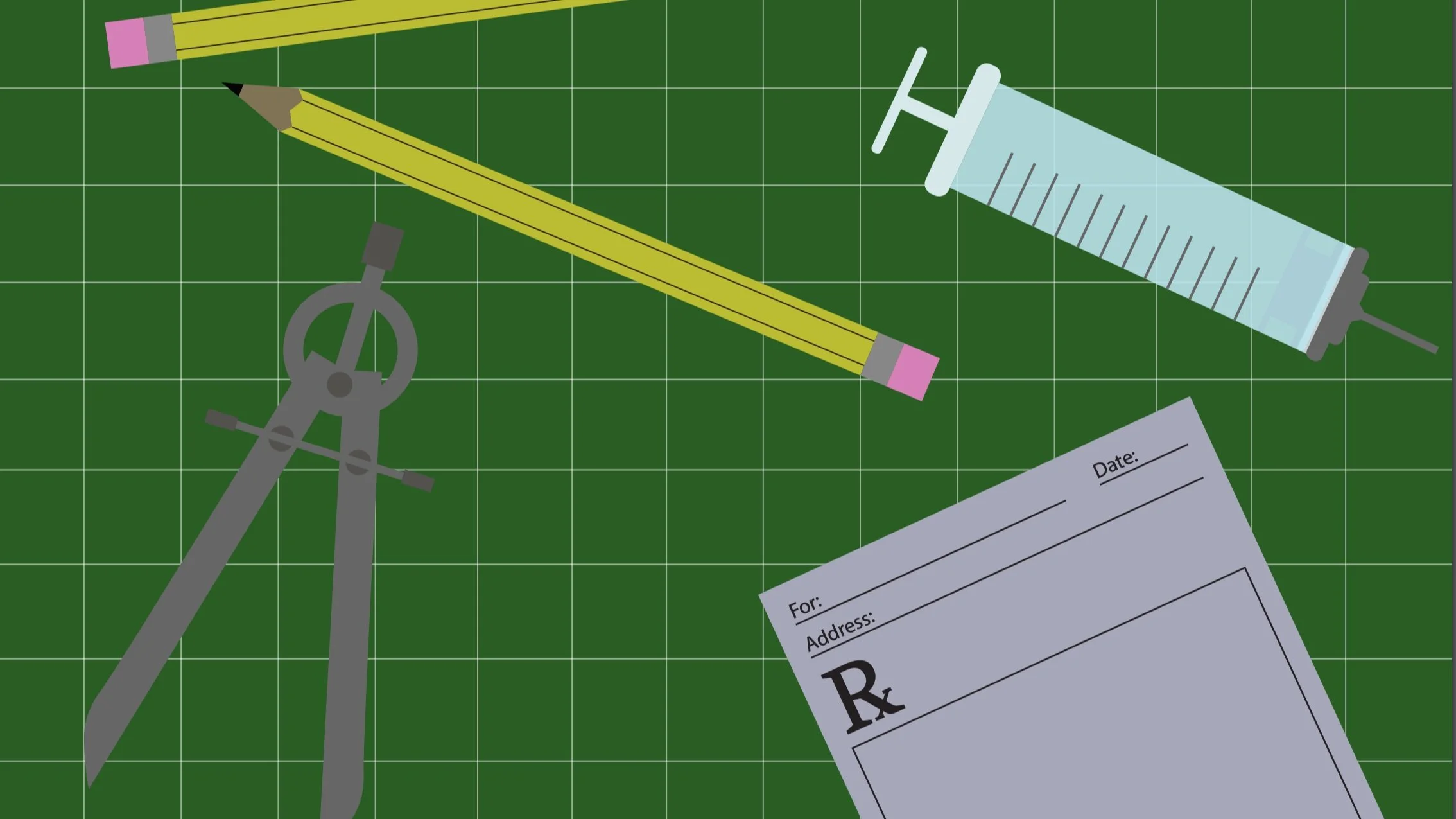Banner by Colton Siatkowski
The Non-Traditional Path to Medicine: Engineer to Doctor
By Grace Hercik
Growing up, Halloween was a chance for my mom to dress me in a costume of her choice, which was often elegant, lovable, and as she would describe it, “a representation of her daughter.” However, my costume choices eventually became my own decision. This decision was always hard: astronaut, police officer, teacher, or doctor. While I did dream of one day wearing a white coat, so did half of the other kids. Looking back, though, never did anyone dress as an engineer. Maybe because there was not a stereotypical dress code for engineers? Or because they did not understand the potential of an engineer-turned-doctor, and thought there was only one path to medicine?
Now, as a sophomore at the University of Pittsburgh majoring in bioengineering on the pre-medicine track, I have answered my own questions. No one ever dressed up as an engineer as a result of their lack of knowledge about the relationship between engineering and medicine; specifically, how a childhood dream of wearing a white coat could involve an undergraduate degree in engineering first.
The goal of becoming a doctor and attending medical school first involves earning an undergraduate degree, which can focus on any subject matter as long as the prerequisites for medical school are met. A 2015 study found that biology was the most prevalent major among employed physicians and surgeons, with nearly 48.7% of them receiving an undergraduate degree in biology prior to attending medical school. However, only 3.8% of physicians and surgeons employed in 2015 had a selected undergraduate in engineering. Yet, the knowledge that an undergraduate degree in engineering provides an aspiring physician is valuable and relatable to the field of medicine.
To better understand the direct intersections between engineering and medicine, I interviewed Dr. Sanjay Mehta, a cardiothoracic surgeon in the Lehigh Valley of Pennsylvania, who graduated from the University of Pittsburgh in 1987 with a degree in chemical engineering. Dr. Mehta confirmed that “no field of medicine is not touched at some capacity by someone that is doing something from a bioengineering standpoint.” Dr. Mehta goes on to acknowledge, “Whether that is medicines, equipment, the way we make the equipment, how we deliver medicine, that is where bioengineering has exploded…it is limitless.” It is evident that medicine is impacted immensely by engineering.
While we can understand the direct, perpendicular crossover of engineering and medicine, there are also parallel skills developed in engineering and medicine that are not often recognized. When asked how valuable his chemical engineering degree is in his current role as a surgeon, Dr. Mehta posited that the problem-solving mindset he learned from earning a degree in engineering is what plays a crucial role in his career today. A point of emphasis that Dr. Mehta made was that “engineering is all about learning how to think through problems, not just rote memorization.” For Dr. Mehta, this problem-solving mindset now comes into play when he has a patient’s heart in front of him in the operating room and something does not go right; he must be able to think quickly to recognize what the different options are in trying to solve the problem.
It is not only this problem-solving mindset gained from a background in engineering that allows individuals to succeed in medicine, but the knowledge from engineering-specific classes that allows a greater connection between the two fields. In an article published by Texas Monthly, the author Jason Heid discusses the transformation that Texas A&M University is looking to make by training a generation of innovation-minded physicians. Heid posed the idea that thinking beyond medicine’s established vocabulary and methods is not prioritized and is often discouraged. However, as scientific advances continue, Heid suggests that “medicine might be well served by a new sort of doctor—one schooled not merely in what the latest technology does but also in how it works.” Physicians who are schooled in both the vocabulary and methods of medicine and the technology and tools of medicine provide more opportunities for advancements in both the fields of engineering and medicine. It is these physicians that are making better use of the equipment and envisioning ways to continue the improvement of medical technology and innovations.
Dr. Timothy Boone, the head of urology at Houston Methodist Hospital, understands the connection between engineering and medicine, as he suggests that petroleum engineers, who often work with pumps, pipes, and valves, “may be the new cardiovascular surgeons because they are bringing the fluid dynamics side of engineering into cardiovascular surgery.” Furthermore, other aspects of engineering could also be applied in the medical context. For example, an engineering undergraduate may be discussing artificial intelligence. Four years from now, the same student, who is now in medical school, will be focusing on improvement of patient diagnoses. The final question for the student to answer may be, “How might AI be used more effectively to assist physicians in screening and diagnosing patients?”
Because of the innovation and integration that engineers are continuing to contribute to the field of medicine, Texas A&M’s EnMed program, which was inaugurated in 2019, offers a Doctor in Medicine, M.D., as well as a Master of Science, M.S., in engineering. The program works to integrate the two fields and expand the intersection of the perpendicular relationship that exists between engineering and medicine. Some may ask, “Why would you want an M.S. in engineering when you ultimately aim to achieve the childhood dream of wearing a white coat?” To those people, it is understanding the problem-solving mindset that a background in engineering offers physicians, as well as the advanced knowledge of modern technology and tools aside from the basic vocabulary and methods. Specifically, it is understanding what engineers bring to the operating table.
